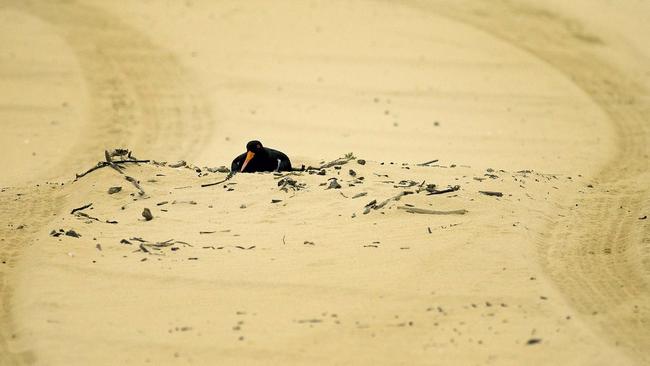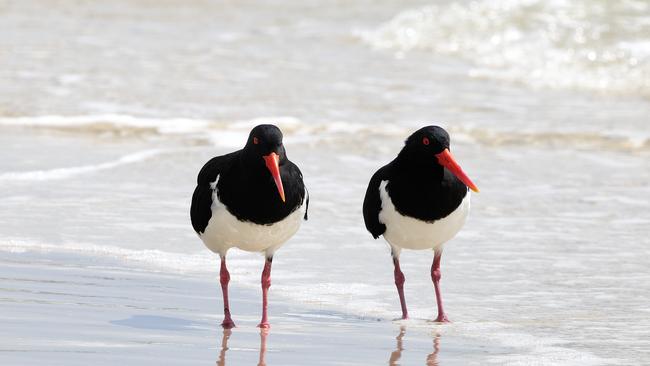Why these birds are leaving South Ballina beaches
AUSTRALIAN pied oystercatchers are leaving the area and it’s not for lack of food, a new scientific paper proposed.

Lismore
Don't miss out on the headlines from Lismore. Followed categories will be added to My News.
A SCIENTIFIC paper on the decrease of Australian oystercatchers in South Ballina has pointed to the use of 4WD vehicles at the beach as the main reason for their decline in numbers.
The paper Taking fright: the decline of Australian Pied Oystercatchers Haematopus longirostris at South Ballina Beach, New South Wales, was published online by Ballina Shire resident Stephen Totterman.
This study reviewed data from the Richmond River Area Pied Oystercatcher Protection Program 1997–2013 and Richmond River Area Shorebird Protection Program 2014–2018.
Mr Totterman said he compared data between South Ballina and Bomber Range Beach, using the second one as a control site, given that is inaccessible to humans.
“Human recreation disturbance is preventing recruitment into the South Ballina oystercatcher breeding population,” he stated in the paper.
In the document, Mr Totterman explained that the size of the breeding population of Australian Pied Oystercatchers (Haematopus longirostris) in South Ballina Beach has decreased from 15–16 pairs in 1994–1996 to 7–9 pairs in 2016–2018.
This has happened despite control of the European Red Fox, and still more than 208 oystercatchers have fledged from beaches in the Richmond River area between 1997 and 2018.
In comparison, the population for Bombing Range Beach has increased from 4–5 pairs in 2002–2004 to 8–9 pairs in 2016–2018.

In regards to food availability, the data pointed out that pipis (the main source of food for the birds) are at similar levels in both sites, so there is no reason for the birds to leave South Ballina. Unless you consider 4WD activity.
“South Ballina, with uncontrolled beach driving, and Black Rocks, adjoining a popular camp ground, had the lowest mean breeding productivities in this study,” the report said.
“Bombing Range, with no public access, had the highest mean productivity. These results support the hypothesis that oystercatcher breeding success is lower at sites with more intense human recreation disturbance.
“Frequent disturbance can make otherwise suitable breeding habitat less attractive, resulting in poor recruitment and a reduction in breeding population size as old birds die and are not replaced. Banning 4WDs could be a reprieve but beach house developments are permanently increasing human recreation disturbance.
“Without strong protection of habitat from such disturbance, the NSW oystercatcher breeding population size will continue to decrease in the next two decades.”
Read more:


